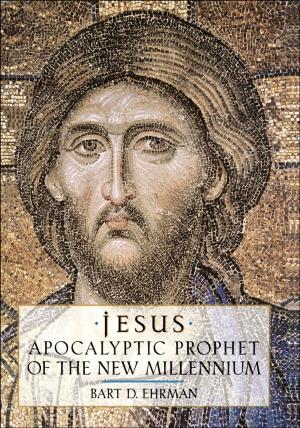The Flight of Love
A Messenger Poem of Medieval South India by Venkatanatha
Fiction & Literature, Literary Theory & Criticism, Asian, South & Southeast Asian, Nonfiction, Religion & Spirituality, Eastern Religions, Hinduism| Author: | Steven P. Hopkins | ISBN: | 9780190613594 |
| Publisher: | Oxford University Press | Publication: | April 1, 2016 |
| Imprint: | Oxford University Press | Language: | English |
| Author: | Steven P. Hopkins |
| ISBN: | 9780190613594 |
| Publisher: | Oxford University Press |
| Publication: | April 1, 2016 |
| Imprint: | Oxford University Press |
| Language: | English |
After a sleepless night spent longing for his absent wife Sita, Rama, god-prince and future king, surveyed his army camps on a clear autumn morning and spied a white goose playing in a pond of lotus flowers. Seeing this radiant creature who so resembled his lost beloved, he began to plead with the bird to give her a message of love and fierce revenge. This is the setting of the Hamsasandesa A Message for the Goose, a sandesa or "messenger poem" by the medieval saint-poet and philosopher Venkatanatha, a seminal figure for the Srivaisnava religious community of Tamil Nadu, South India, and a master poet in Sanskrit and Tamil. In The Flight of Love, Steven P. Hopkins situates Venkatanatha's Sanskrit sandesa within the wider comparative context of South Indian and Sri Lankan literatures. He traces the significance of messenger poetry in the construction of sacred landscapes in pre-modern South Asia and explores the ways the Hamsasandesa re-envisions the pan-Indian story of Rama and Sita, rooting its protagonists in a turbulent emotional world where separation, overwhelming desire, and anticipated bliss, are written into the living particularized bodies of lover and beloved, in the "messenger" goose and in the landscapes surrounding them. Hopkins's translation of the Hamsasandesa into fluid American English verse is framed by a comparative introduction, including an extended essay on translation, detailed linguistic notes, and an expanded thematic commentary that weaves together traditional religious interpretations of the poem with themes of contemporary literary relevance.
After a sleepless night spent longing for his absent wife Sita, Rama, god-prince and future king, surveyed his army camps on a clear autumn morning and spied a white goose playing in a pond of lotus flowers. Seeing this radiant creature who so resembled his lost beloved, he began to plead with the bird to give her a message of love and fierce revenge. This is the setting of the Hamsasandesa A Message for the Goose, a sandesa or "messenger poem" by the medieval saint-poet and philosopher Venkatanatha, a seminal figure for the Srivaisnava religious community of Tamil Nadu, South India, and a master poet in Sanskrit and Tamil. In The Flight of Love, Steven P. Hopkins situates Venkatanatha's Sanskrit sandesa within the wider comparative context of South Indian and Sri Lankan literatures. He traces the significance of messenger poetry in the construction of sacred landscapes in pre-modern South Asia and explores the ways the Hamsasandesa re-envisions the pan-Indian story of Rama and Sita, rooting its protagonists in a turbulent emotional world where separation, overwhelming desire, and anticipated bliss, are written into the living particularized bodies of lover and beloved, in the "messenger" goose and in the landscapes surrounding them. Hopkins's translation of the Hamsasandesa into fluid American English verse is framed by a comparative introduction, including an extended essay on translation, detailed linguistic notes, and an expanded thematic commentary that weaves together traditional religious interpretations of the poem with themes of contemporary literary relevance.















